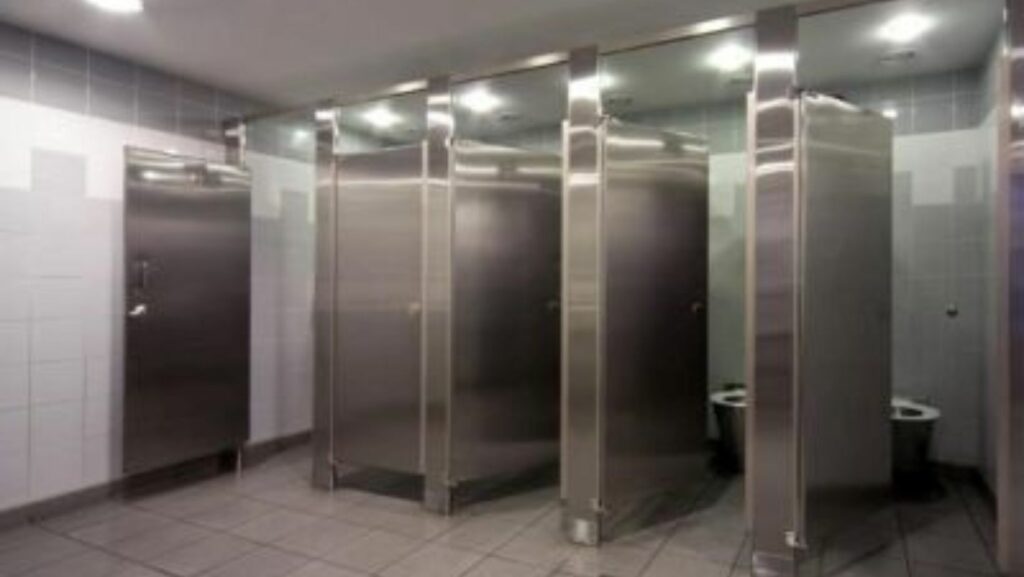Restroom partitions shape the experience of shared spaces, influencing both privacy and durability. Choosing the right material ensures long-term performance while enhancing the overall aesthetic. Before deciding, facility owners, architects, and contractors must weigh factors like moisture resistance, maintenance, and cost.
ASI Global Partitions offers a range of high-quality restroom dividers, each designed to withstand specific environments. Materials vary from powder-coated steel and plastic laminate to stainless steel and solid plastic, each with unique strengths. Some resist graffiti, while others thrive in high-humidity areas. Knowing the right fit helps create a clean, functional space that lasts.
This post breaks down restroom partition materials and their benefits, helping you select the best option for any setting.
Powder-Coated Steel
Powder-coated steel partitions provide a cost-effective and durable solution. A lightweight honeycomb core sits between two steel sheets, creating a sturdy yet affordable structure. This material resists scratches and general wear but performs best in low-moisture environments. Cleaning requires minimal effort, making it suitable for schools, offices, and commercial spaces with controlled humidity levels.
Plastic Laminate
Plastic laminate partitions combine affordability with design versatility, offering various design possibilities. A high-pressure laminate surface covers a particleboard core, creating an attractive and smooth finish. These partitions work well in low-moisture areas but require proper sealing to prevent swelling. Their aesthetic appeal identifies them as the preferred choice for office restrooms, restaurants, and boutique stores.
Plastic laminate partitions are also known for their ease of maintenance. Their smooth, non-porous surface resists stains and can be cleaned with mild detergents. They are available in various colors, textures, and patterns, allowing customization to match different interior designs.
Additionally, these partitions offer moderate durability but are not ideal for high-humidity environments, as prolonged exposure to moisture can cause warping or delamination. Proper installation and regular upkeep can extend their lifespan, making them a practical option for commercial spaces with controlled indoor conditions.
Solid Plastic
High-density Polyethylene (HDPE) partitions stand out for their durability and moisture resistance. Their non-porous surface prevents mold, bacteria, and graffiti from taking hold. These partitions withstand heavy impact and require minimal maintenance, making them perfect for high-traffic environments such as schools, gyms, and public restrooms. The slightly higher initial cost translates into long-term savings due to their extended lifespan.
Stainless Steel
Stainless steel partitions offer unmatched durability and a sleek, modern appearance. Their resistance to rust, scratches, and stains ensures they remain in top condition for years. These partitions handle high-humidity environments well, making them ideal for luxury establishments, airports, and commercial buildings. Their sophisticated look enhances restroom aesthetics while providing exceptional strength.
Phenolic Compact Laminate
Phenolic partitions feature multiple layers of resin-infused kraft paper, creating a strong, waterproof structure. These partitions resist moisture, impact, and bacteria, making them an excellent choice for high-humidity areas. Their durability suits locations such as healthcare facilities, fitness centers, and stadiums where sanitation and strength are priorities.
In conclusion, restroom partitions are crucial in facility design, impacting functionality and maintenance. Powder-coated steel offers budget-friendly durability, while solid plastic and phenolic laminate provide exceptional resistance to moisture and wear.
Stainless steel delivers strength and elegance, and plastic laminate blends affordability and style. Selecting the right material ensures that a restroom remains clean, durable, and visually appealing for years, empowering your design decisions.

